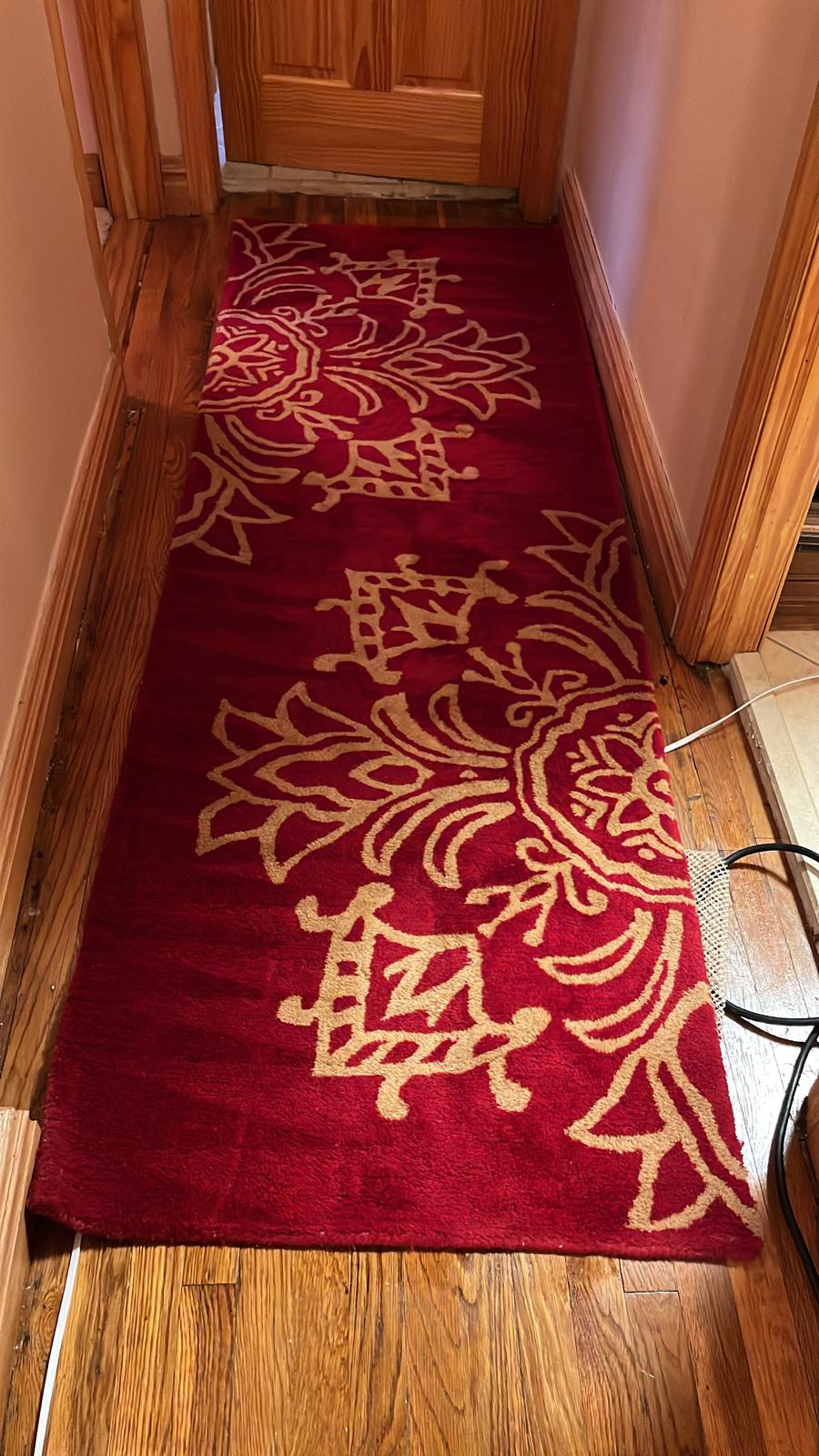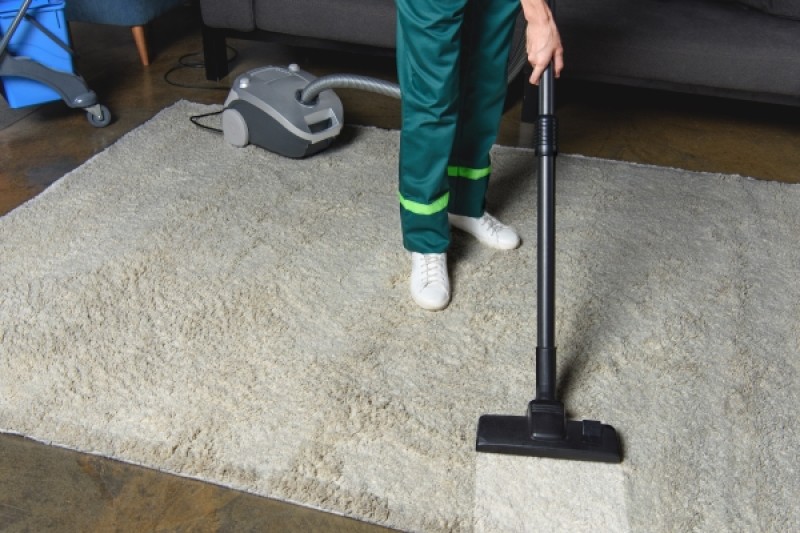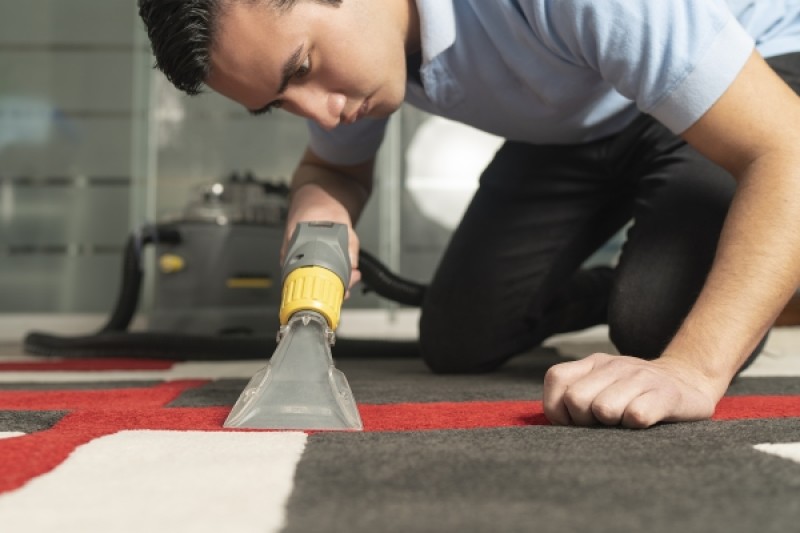Viscose rugs are becoming more and more common in people’s homes nowadays. Viscose is a terrible fiber that is environmentally unfriendly, cheap, weak, and hard to clean. It's definitely a nightmare of a fabric. So what happens if you want to clean your viscose rug (or clean your viscose couch)? Or you find there is a yellow stain on the rug somehow and you want to clean it? In this article, we discuss how to clean a viscose rug and whether they are easy or hard to clean.
Pros and Cons of Viscose Rugs
Despite the multitude of negatives about viscose rugs, there are some positives. Let's discuss the negatives and positives of viscose rugs.
Pros
Resembles Silk
Viscose often has many different names including lyocell, tencel, faux silk, bamboo silk, artificial silk (art silk), and more. It has a shiny and soft appearance, giving it a lustrous look. In this way, consumers buy viscose carpets because they add a touch of class to your space.
Does Not Retain Heat
Viscose isn’t like wool which is an insulating fiber. Viscose on the other hand is artificially produced from cellulose and therefore is much cooler. During warm months, despite its medium pile, viscose rugs can be comfortable underfoot.
Many Styles
Due to their increasing popularity in recent years, viscose rugs are available in many shapes, sizes, and patterns. Consumers like how they reflect light somewhat and resemble a semi-velvet look. They are a designer fabric.
Cons
Stains Easily
Viscose is a cellulose based fiber, derived from plants. Cellulose also makes paper and when wet it browns. When your viscose rug comes in contact with water, a chemical reaction occurs leaving a brown or yellow stain. These are often permanent, making the rug very impractical for both cleaning and living purposes. Don’t put a plant or pot on it! It’s a surefire way of destroying the rug.
Difficult To Clean
Because viscose is fairly intolerant to water, cleaning a viscose rug for a professional rug cleaner is very difficult. Special chemicals and procedures are necessary to clean viscose rugs and removal of stains is not guaranteed. Because of the difficulty, prices will be higher for viscose rug cleaning and they must be cleaned in a facility, not in-home.
Weak Fibers
Viscose fibers are weak and have a low durability rating. It is recommended to keep viscose rugs in the low traffic areas of your home as excessive wear will cause the fibers and break. For comparison, wool fibers can be bent 10,000 times before breaking. Silk can withstand 2,000 bending cycles. Viscose will break after just 70!
Not Great for Cold Climates
If you are hoping that your viscose rug will keep you warm in the winter, think again. The fibers of the rug don’t have insulating effects and therefore won’t retain heat.
Unsafe
Viscose is made from wood pulp, but the refining process requires a lot of harmful chemicals which are unsafe for the consumer and the planet. These chemicals also off gas and can cause headaches, nausea, chest pain, insomnia, and vomiting in sensitive individuals.
How to Clean Viscose Rugs
There are a few couple ways to clean your viscose rug. Due to its water intolerance, the choices are limited.
Vacuuming
Vacuuming can be done but do it carefully. Go over the rug slowly, picking up any loose soil that may have embedded itself into the fibers. Do not use a beater bar as the fibers are prone to breakage.
Spot Cleaning
If you do attempt to spot clean your viscose rug, know that you are playing with fiber. For whatever spill occurred, use a cleaning solution designed for carpet or upholstery cleaning. Blot the area gently until you have removed as much of the offending material as possible. Use a paper towel to blot it as dry as possible after stain removal. Get a household fan and direct it on the highest setting onto the spot. It's important to dry it as fast as possible. This method will most likely prevent yellowing or browning but the method is not guaranteed as all viscose fibers are manufactured differently and react differently. Wool viscose blend rugs may have a higher success rate.
Professional Cleaning
The best way to clean your viscose rug is to have it professionally cleaned. Over the years, experts have gotten better and better at cleaning viscose rugs, despite all of their challenges. Some yellowing and browning may be removed in the professional viscose rug cleaning process. The process includes picking up the rug from the customer’s house, cleaning it in a facility with special chemicals and tools, speed drying it, and then delivering it back to the customer. If there are permanent yellow or browning spots, the rug can possibly undergo color restoration in which expert technicians will first bleach then re-dye the offending spots to match the color and pattern of the rug, with a result that is unnoticeable or nearly unnoticeable from its original, new condition.
Viscose Rug Cleaning in NYC
If you need professional viscose rug cleaning in NYC, we have comprehensive cleaning and repair services for your delicate rug. Whether you want to remove yellow stains from a viscose rug or just want to give it a refresh, we have the solutions you need. Call us today for your rug cleaning needs or fill out our request a quote form online!
Frequently Asked Questions
Viscose is artificially produced from cellulose, derived from plants, and used in rugs for its shiny and soft appearance.
Pros include its silk-like luster, coolness underfoot during warm months, and availability in various styles and patterns.
Viscose reacts with water, leading to brown or yellow stains due to a chemical reaction similar to that of wet paper, making stains often permanent.
No, they are challenging to clean due to their intolerance to water, requiring special chemicals and procedures, with stain removal not guaranteed.
Viscose fibers have a low durability rating, prone to breakage under excessive wear, significantly less resilient compared to wool and silk.
No, viscose does not retain heat, making it unsuitable for providing warmth in cold climates.
The production of viscose involves harmful chemicals which can be unsafe for both consumers and the environment, potentially causing health issues.
Vacuum gently without using a beater bar to avoid breaking the delicate fibers, picking up loose soil embedded in the rug.
Spot cleaning is risky and should be done with a suitable cleaning solution and blotting gently, followed by rapid drying to avoid yellowing or browning.
Spot clean cautiously with a recommended carpet cleaner, but yellow stains may be permanent. Professionals might offer solutions like color restoration.
Gentle vacuuming and spot cleaning with a mild upholstery detergent solution can be attempted, but for significant cleaning needs, professional expertise is recommended.
Vacuum carefully and treat spots with cleaners safe for wool and viscose. The blend may offer slightly more durability but still requires cautious cleaning.




